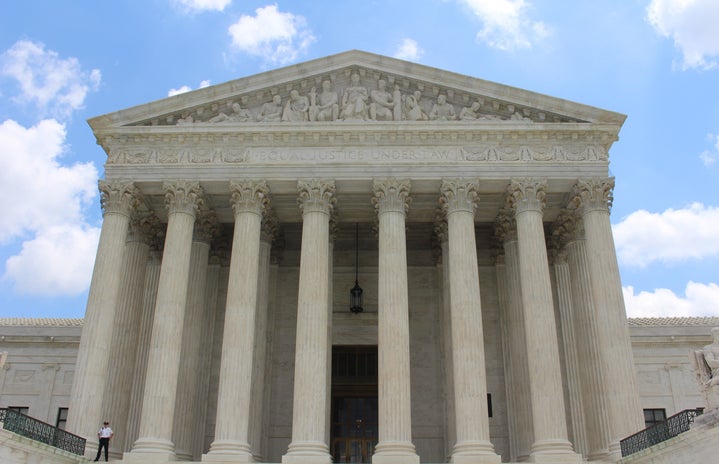In my opinion, the statement that “the right to privacy is found nowhere in the Constitution, so the opinion in Griswold v. Connecticut and all opinions that rely on it involve judges ignoring the Constitution and creating rights” is incorrect.
My reasons for believing that the above statement is false are rooted in my views of how the Constitution should be interpreted. Constitutional interpretations are important because they affect the way in which justices apply the Constitution to different scenarios and ultimately rule on cases. Although various Constitutional interpretations exist, the two interpretations I am going to focus on for the purposes of my argument are originalism and the moral reading theory of constitutional interpretation.
Before diving into the different interpretation theories, it is important that I briefly outline the main points of Griswold v. Connecticut. In this case, the head of Planned Parenthood in Connecticut (Ms. Griswold) opened a birth control clinic despite a Connecticut state law that banned any mechanism that could further contraception. Connecticut law enforcement fined Griswold for running the practice, sparking the question of whether or not the Constitution protects an individual’s right to privacy against state restrictions on the use of contraceptives. The Supreme Court’s answer to this question was yes. The majority reasoned that even though the “right to privacy” is not explicitly stated in the Constitution, it is created by the combination of several amendments including the 14th, 9th, and 3rd. Although the text of the Constitution does not include the right to privacy, the majority read the Constitution for important democratic themes that align with the “penumbras”, rights that are fundamental to the individual liberties of every citizen. Griswold says the right to privacy is constitutionally guaranteed because it exists within the “penumbras” of the constitution’s specifically guaranteed rights (Brettschneider, 203).
The justices who used the above reasoning to make their final decisions in Griswold v. Connecticut adopted the moral reading theory of constitutional interpretation to establish a legitimate constitutional right to privacy. I believe the moral reading theory to be the best theory of constitutional interpretation because it focuses on the protection of individual rights. Judges who interpret the Constitution using this theory believe that every individual is guaranteed essential rights as a human being even if the Constitution fails to specifically list those rights. With this mindset, those who adopt the moral reading theory use a broader interpretation of the Constitution’s text. They believe that the general and abstract nature of the Constitution is intentional and thus, gives permission for the Constitution’s various clauses to be applied in a manner best suited to protect individual freedoms and liberties. The decision in Griswold v. Connecticut exemplifies the moral reading theory of Constitutional interpretation because the Supreme Court examined multiple constitutional amendments to conclude that individuals have an inherent right to privacy. When the application of the Constitution is not limited to what the text or original meaning of the text provides, individual liberties are protected. The Supreme Court correctly upheld the individual right to use contraception because they used a holistic approach to their interpretation of the Constitution.
Originalists, on the other hand, would disagree with the majority ruling on this case, agreeing with the idea that the right to privacy is found nowhere in the Constitution. Justices who use originalism to interpret the Constitution would argue that the majority ignored the Constitution and made up rights when ruling on this case. Originalists reject the moral reading theory, focusing instead on the original meaning of the Constitution when it was ratified in the late 1780s. According to originalists, the Court should interpret the Constitution in the way in which it was understood by the American public at the time of its ratification (Brettschneider, 142). Originalists argue that the moral reading theory of constitutional interpretation allows too much room for justices to impose their own opinions. Unlike moral reading theorists, originalists do not look for themes within the Constitution and therefore, find the ruling in Griswold to be inconsistent with basic constitutional principles.
Overall, I believe that the Supreme Court made the correct decision in Griswold v. Connecticut because they used the moral reading theory to protect a woman’s right to sexual privacy. The Constitution was created with the purpose of protecting individual rights and ensuring that the government’s power was properly checked. For these reasons, I see the moral reading theory of constitutional interpretation as the best interpretation method to use when ruling on cases with complex questions that do not have clear-cut answers within the Constitution. Additionally, Originalism is a faulty doctrine to follow because the founders and those who voted to ratify the Constitution could not have possibly foreseen the plethora of new social, economic, and political issues that would arise throughout American history. The originalist argument is self-contradictory and lacks realism within modern legal disputes. Lastly, the Constitution is one, cohesive document. When the amendments are read together, the right to privacy within the Constitution is quite clear. The Third Amendment bans the quartering of soldiers. The Ninth Amendment ensures that other individual rights are protected beyond those specifically laid out in the Constitution. The Fourteenth Amendment guarantees due process and equal protection under the law. Reading these three amendments back to back shows that the right to privacy is indeed embedded into the Constitution. The quartering of soldiers was banned because it allowed for the government to invade Americans’ personal spaces, thus invading their privacy. The Ninth and Fourteenth Amendments essentially guarantee that rights, even ones not specifically written in the Constitution, will be protected and granted equally to all Americans. When these sentiments are put together, an inherent right to privacy within the Constitution is clear. In conclusion, the decision in Griswold v. Connecticut is a sound one because it correctly establishes that the right to privacy is embedded within the Constitution and therefore, cannot be infringed upon by the United States government.


